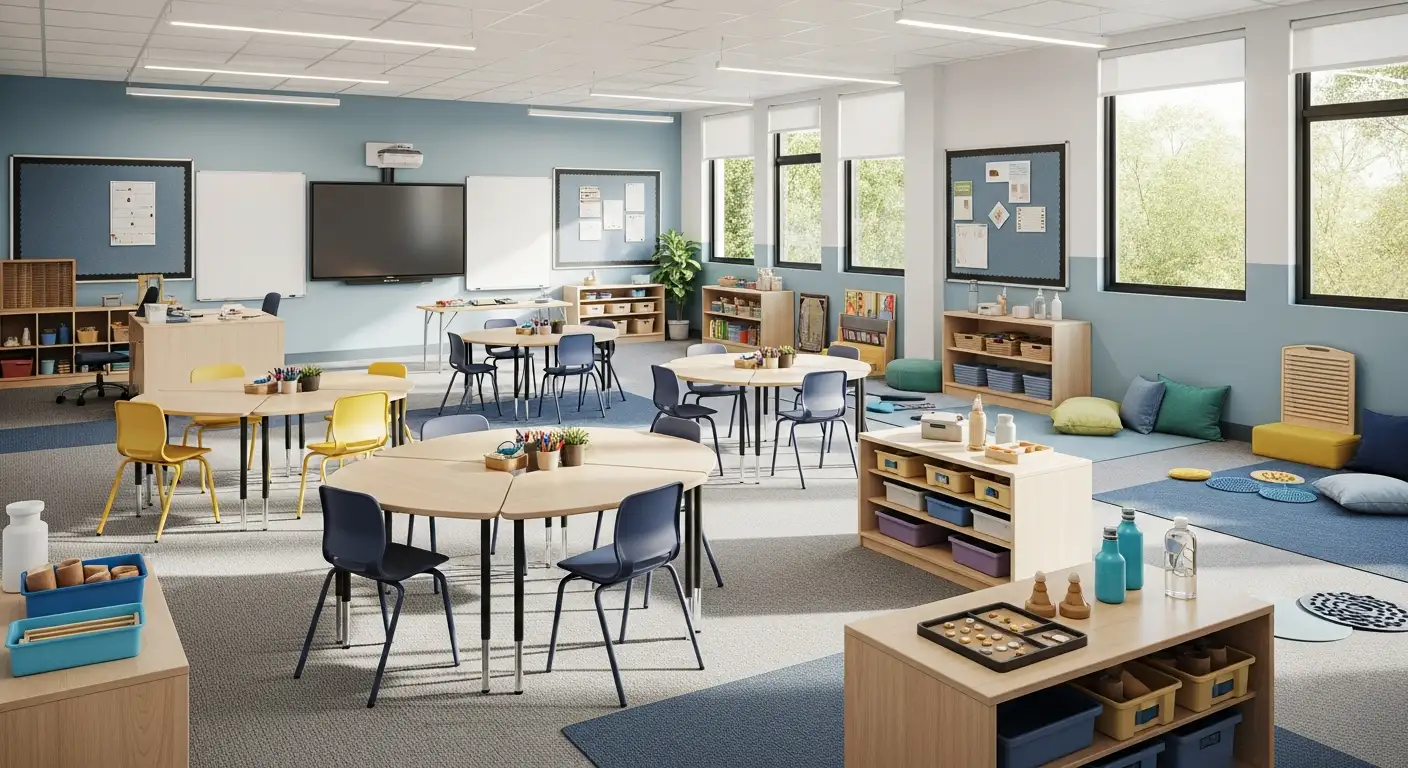Understanding the Critical Role of Generalization in Autism Therapy
Applied Behavior Analysis (ABA) is a widely recognized and effective intervention for children with autism spectrum disorder (ASD). While skill acquisition during therapy is vital, equally important is the child's ability to apply these skills across different environments and situations. This ability, known as generalization, is fundamental to ensuring that behavioral improvements translate into real-world success. This article explores the various facets of generalization, its impact on developmental progress, and strategies to optimize its effectiveness in ABA therapy.
Defining the Types of Generalization in ABA
What are different types of generalization in ABA?
In Applied Behavior Analysis (ABA), understanding the different ways children can transfer learned skills across various contexts is essential. This process is called generalization, and it ensures that skills are not confined to a single setting or situation but become part of everyday life.
There are primarily two main types of generalization: stimulus generalization and response generalization. Stimulus generalization occurs when a child responds to different stimuli that share certain features, even if they are not identical to the original training stimulus. For example, after learning to say 'Hello' to one person, the child greets others in different settings or with different people.
Response generalization involves the child applying varied but functionally similar responses to achieve a goal. For instance, a child may learn to zip up a jacket in therapy but also applies this skill to zip up a backpack or a purse in everyday life.
Besides these, situation or setting generalization plays a vital role. It refers to a child's ability to demonstrate learned behaviors across different environments such as at home, school, or in the community. This type ensures that skills are adaptable and functional in a variety of real-world situations.
Additionally, response maintenance is another critical aspect. It involves retaining and continuing to perform skills over time without prompts or rewards. An example would be a child independently tying shoelaces in multiple settings long after the initial teaching.
Effective ABA programs often incorporate strategies to promote all these types of generalization. These include teaching in varied settings, using multiple exemplars of stimuli, involving caregivers, and gradually reducing prompts. Combining these approaches helps ensure that children can transfer and maintain skills in their daily lives, leading to better independence and confidence.
Practical Examples Demonstrating Generalization

What are some examples of generalization in ABA therapy?
In ABA therapy, generalization is vital for making sure children can use their skills effectively outside the therapy setting. One common example is a child who learns to say "hello" during sessions and then begins greeting different people, such as family members, teachers, and neighbors. This demonstrates stimulus and response generalization, where the child applies a learned greeting across various people and situations.
Another example involves requesting help. A child might be taught to ask for assistance at school, like raising their hand or saying "help," and then generalize this behavior to other environments such as at home or in public. This transfer of a functional skill ensures the child can advocate for themselves in many settings.
Skills such as engaging in social interactions or requesting desired items learned in therapy should extend across different settings and social partners. Achieving this involves practicing in multiple locations, involving caregivers, and using naturalistic teaching methods. These strategies help children apply their skills naturally and confidently wherever they are.
Learning to Greet in Different Contexts
Consider a child who learns to greet their therapist with "hi" or "hello." To promote generalization, the therapist then prompts the child to say "hello" to other individuals, like classmates, neighbors, or during community outings. This helps the child understand that greetings are appropriate in many social settings.
Asking for Help in Various Environments
Similarly, a child trained to request help in therapy might learn to say "help" when they can't open a toy or need assistance with a task. The goal is for the child to use that same request at school, at a friend's house, or in public spaces, reinforcing the skill's flexibility and usefulness.
Transferring Skills to Community Settings
Finally, generalization includes applying skills learned in structured therapy to community environments. For instance, a child who masters asking for a snack or crossing the street with guidance should be able to do so safely and independently in parks, grocery stores, or playgrounds. Facilitating these opportunities ensures that children become more autonomous and better prepared for everyday life.
These examples highlight how ABA therapy encourages children to use their skills broadly, making learning meaningful and applicable to real-life situations. Promoting such transfer not only boosts confidence but also supports a child's independence and social participation.
Impact of Generalization on Child Development

How does generalization impact the developmental progress of children with autism?
Generalization plays a vital role in the growth and development of children with autism. It allows children to transfer skills they've learned in one setting to new situations, environments, and with different people. This transfer of skills is crucial for increasing independence and functional abilities in daily life.
Without effective generalization, children may only perform certain skills during therapy sessions or in specific environments, which limits their ability to independently navigate real-world challenges. Therefore, promoting generalization helps bridge the gap between clinical learning and practical, everyday use.
Children with autism often face difficulties in generalizing skills due to challenges in connecting new stimuli with previous experiences. These difficulties tend to be related to the child’s language development, particularly receptive vocabulary skills, which influence their ability to understand and respond to new stimuli.
Educational and therapy approaches that incorporate varied training conditions—such as using multiple examples, teaching in different settings, and involving natural routines—are effective in improving generalization.
By enhancing generalization, children are able to demonstrate more consistent, flexible, and autonomous skill use. This leads to better social interactions, greater adaptability in daily routines, and improved long-term retention of skills, ultimately supporting more meaningful developmental progress for children with autism.
Strategies and Techniques to Foster Generalization

What strategies can be used to promote generalization in ABA therapy?
Promoting skill generalization in ABA therapy involves several practical strategies aimed at helping children apply learned skills across different environments and situations. A foundational approach is teaching across multiple settings. This means providing therapy in various locations, such as at home, in school, or in community settings. This exposure helps children understand that skills are not limited to one context.
Using varied materials and stimuli is another effective technique. For example, a child who learns to greet someone with “Hello” in therapy should practice greeting different people, with different voices and in different scenarios, using a range of objects or cues like greeting a person, waving, or saying “Hi” to a pet.
Involving caregivers and natural environments greatly supports generalization. Parents, teachers, and community members should be engaged in reinforcing skills learned during therapy. This consistency across settings ensures behaviors are maintained and adapted outside the clinical environment. Parent training plays a crucial role here, empowering caregivers to reinforce behaviors at home.
Fading prompts and reinforcement is also vital. Starting with structured and closely guided teaching, prompts are gradually removed or diminished. Reinforcements shift from highly motivating items or activities to more natural reinforcement, like social praise or everyday rewards, encouraging independence. This process helps children perform skills without relying heavily on external prompts or rewards.
Incorporating these strategies creates a flexible, varied learning experience that mirrors real-world scenarios. The goal is to help children transfer skills seamlessly from the therapy environment to everyday life, resulting in improved social interactions, greater independence, and longer-lasting skills.
Parents and Educators as Key Facilitators of Generalization
 Reinforcing skills in multiple environments
Reinforcing skills in multiple environments
For children undergoing ABA therapy, practicing skills in various contexts is essential to ensure they can apply learned behaviors outside of clinical settings. Parents and educators play a vital role by intentionally incorporating skills into everyday routines at home, school, and community activities. This consistent practice helps the child transfer behaviors across different stimuli and situations, making their learning meaningful and functional.
Training caregivers and teachers
Providing targeted training to parents and teachers equips them with effective strategies for supporting skill generalization. Through ABA training sessions, caregivers learn how to use prompts, reinforcement, and visual supports tailored to each child's needs. This shared knowledge enables consistent behavior management and skill reinforcement across different settings, which enhances the child's ability to apply skills independently.
Establishing routines and visual supports
Structured routines and visual aids are powerful tools that promote predictability and understanding. Visual schedules, cue cards, and step-by-step guides help children anticipate what will happen next, reducing anxiety and confusion. Consistent routines reinforce skill use, and visual supports make abstract concepts concrete, assisting children in generalizing skills across various environments and tasks.
Fostering consistent reinforcement
Immediate and specific positive reinforcement encourages children to repeat desirable behaviors and apply skills in new contexts. Celebrating successes and providing frequent praise boost motivation and confidence. When caregivers reinforce skills consistently, children learn that these behaviors are valuable in many situations, which promotes their long-term retention and adaptability.
Implementing these strategies comprehensively ensures that children with autism can extend their skills beyond the therapy setting. Active involvement from parents and teachers, combined with effective routines and reinforcement, creates a supportive environment where children can thrive and attain greater independence.
Why Generalization is Essential for Lasting Behavioral Change

Why is it important for learners to generalize new behaviors?
Generalization plays a vital role in ensuring that children with autism can transfer skills learned during therapy to a variety of real-world settings. When children master a skill only within a specific environment, such as a therapy room, it limits their ability to use that skill effectively elsewhere. By promoting generalization, therapy helps children to apply new behaviors across different situations, people, and stimuli, making their skills more functional and meaningful.
This process not only supports better behavior transfer but also helps in retaining skills over time. Children become more confident and independent when they can perform routines, communicate, and interact without needing prompts in unfamiliar environments.
Long-term success and independence
The ultimate goal of ABA therapy is to foster long-lasting changes that improve a child's ability to function independently. Generalization ensures that learned skills do not fade once therapy ends. For example, a child who learns to say "hello" in therapy should also greet others at home, in school, and in the community.
When skills are generalized, children are better equipped to navigate different settings, fostering greater independence in daily routines. This can lead to improved social interactions, greater flexibility in adapting to new situations, and increased self-confidence.
Efficiency of learning and application
Promoting generalization makes the learning process more efficient. Instead of teaching every possible variation of a behavior in every environment, therapists use strategies like teaching with multiple examples, involving different instructors, and varying materials.
This approach encourages children to adapt their skills to new contexts naturally. As a result, they can apply learned behaviors more broadly without requiring extensive retraining for each new situation.
In conclusion, generalization is crucial for turning therapeutic gains into meaningful, lasting, and functional skills that support a child's independence and success across all areas of life.
| Aspect | Description | Examples |
|---|---|---|
| Behavior Transfer and Retention | Applying skills across different settings and retaining them over time | Greeting in various environments, tying shoelaces independently |
| Long-term Success and Independence | Ensuring skills are useful and sustainable in daily life | Greet new people, navigate different routines |
| Learning Efficiency | Reducing the need for repetitive, environment-specific teaching | Using multiple exemplars, involving caregivers, natural teaching methods |
Moving Forward with Effective Generalization Practices
Facilitating generalization within ABA therapy is fundamental to producing meaningful, long-lasting improvements. By implementing diverse teaching strategies, involving caregivers, and emphasizing natural settings, therapists and families can ensure that skills are not only learned but also reliably transferred and maintained across all facets of a child's life. Emphasizing the importance of understanding and applying generalization principles paves the way for more independent, confident, and adaptable individuals with autism, thereby enriching their overall developmental trajectory.
References
- Generalization: An ABA Technique - Golden Care Therapy
- What is generalization in ABA therapy? - Nevada Autism Center
- Why Generalization from Clinic to Home Matters in Therapy
- Generalization in ABA Therapy for Skill Expansion
- Generalization: What it Means and Why it Matters
- Beyond intervention into daily life: A systematic review of ...
- The Importance of Generalization in ABA - HANDS Center for Autism



